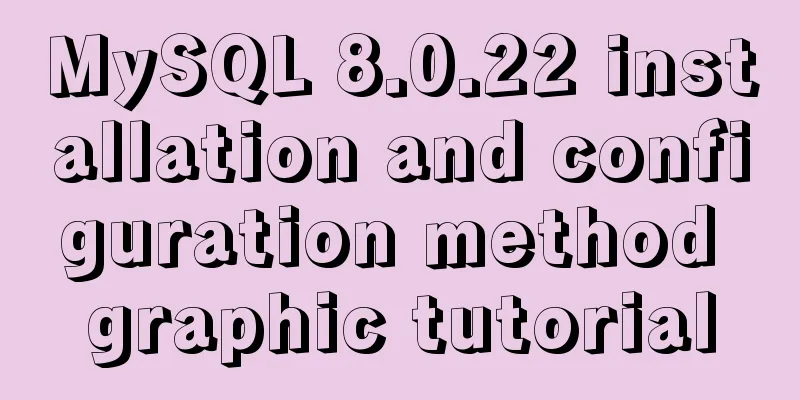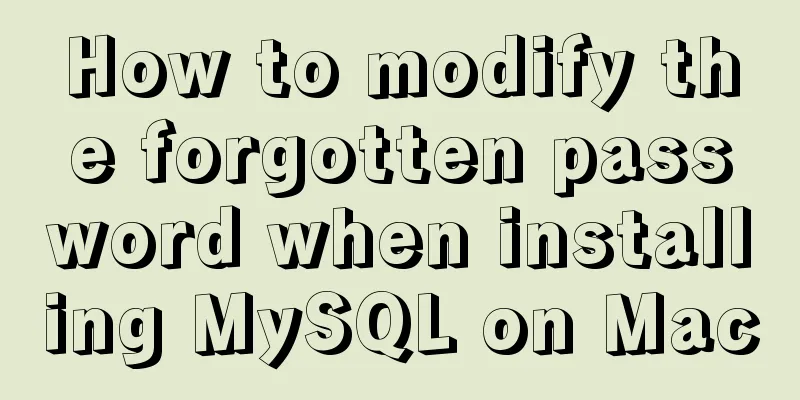An article to understand the use of proxies in JavaScript

What is an agentDefinition on MDN: Proxy objects are used to define custom behaviors for basic operations (such as property lookup, assignment, enumeration, function calls, etc.). The official definition is always so obscure and boring, so what exactly can Proxy do? 1. The concept of agent comes from metaprogramming, which is a kind of program that can read, modify, analyze, and even generate new programs. JS can perform JS metaprogramming through the two objects Proxy and Reflect! ! 2.Proxy is a proxy. When it is inconvenient for us to access an object or we are not satisfied with simple access, the proxy can act as a "middleman" to help us better control the operation of the object! ! Basic knowledge of Proxygrammar:
const handler = {};
let target = {}; //Target object let userProxy = new Proxy(target,handler); //Proxy is implemented successfully! !
userProxy.a = 1;
console.log(target.a);//1
console.log(target == userProxy); //false
target : the target object to be wrapped with Proxy handle r: An object that usually has functions as attributes, where the functions in each attribute define the behavior of the agent when performing various operations. OK! Then congratulations, you have mastered the definition of Proxy. In use, we need to pay more attention to the code of the proxy behavior in the handler, which can help us use Proxy better Handler object methods
const handler = {
get(target,prop,receiver){
console.log('get!');
return 'a';
}
}
let target = {name:'tar'};
let userProxy = new Proxy(target,handler);
userProxy.name
Of course, there are many other methods, please refer to MDN: Methods of handler objects What Proxy can achieve Tracking property access When we need to know when an object is accessed or modified.
let target = {
name:'ww'
}
const handlers = {
get(tar, prop){
console.log('get');
return Reflect.get(...arguments);
},
set(tar,prop){
console.log('set');
return Reflect.set(...arguments);
}
}
let userProxy = new Proxy(target, handlers);
userProxy.name;
userProxy.name = 'wqw';
Solve the problem of object properties being undefined
let target = {}
let handlers = {
get: (target, property) => {
target[property] = (property in target) ? target[property] : {}
if (typeof target[property] === 'object') {
return new Proxy(target[property], handlers)
}
return target[property]
}
}
let proxy = new Proxy(target, handlers)
console.log('z' in proxy.xy) // false (In fact, this step has created an xy attribute for `target`)
proxy.xyz = 'hello'
console.log('z' in proxy.xy) // true
console.log(target.xyz) // hello
We proxy get and perform logical processing inside it. If the value we want to get comes from a non-existent key, we will create the corresponding key in target and then return a proxy object for this key. This ensures that our value-taking operation will not throw can not get xxx from undefined However, this will have a small disadvantage, that is, if you really want to determine whether the key exists, you can only use the in operator to determine it, and you cannot directly determine it through get. References:MDN-Proxy JS-Design Patterns What interesting things can Proxy do? Metaprogramming SummarizeThis article ends here. I hope it can be helpful to you. I also hope that you can pay more attention to more content on 123WORDPRESS.COM! You may also be interested in:
|
<<: Detailed explanation of how to install mysql5.7.16 from source code in centos7 environment
>>: Solution to the problem that VMware15 virtual machine bridge mode cannot access the Internet
Recommend
Example of how to achieve ceiling effect using WeChat applet
Table of contents 1. Implementation 2. Problems 3...
Introduction and use of five controllers in K8S
Table of contents Controller type of k8s Relation...
MySQL series tutorials for beginners
Table of contents 1. Basic concepts and basic com...
Discussion on the Issues of Image Button Submission and Form Repeated Submission
In many cases, in order to beautify the form, the ...
Three steps to solve the IE address bar ICON display problem
<br />This web page production skills tutori...
The principle and implementation of two-way binding in Vue2.x
Table of contents 1. Implementation process 2. Di...
Share 8 MySQL pitfalls that you have to mention
MySQL is easy to install, fast and has rich funct...
Detailed explanation of overlay network in Docker
Translated from Docker official documentation, or...
Mobile browser Viewport parameters (web front-end design)
Mobile browsers place web pages in a virtual "...
Detailed explanation of ES6 Promise usage
Table of contents What is a Promise? Usage of rej...
uniapp Sample code for implementing global sharing of WeChat mini-programs
Table of contents Create a global shared content ...
CentOS 7 set grub password and single user login example code
There are significant differences between centos7...
Detailed explanation of the marquee attribute in HTML
This tag is not part of HTML3.2 and is only suppo...
Detailed explanation of MySQL's FreeList mechanism
1. Introduction After MySQL is started, BufferPoo...
Advantages and disadvantages of common MySQL storage engines
Table of contents View all storage engines InnoDB...









